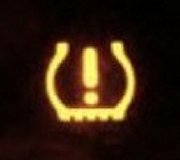CJ is right about "formed" parts. You'll see little ripples and dimples in the control arm, frame rails, and other body parts to form crumple zones. Whatever bent has almost surely bent at a designed-in spot so it would absorb as much impact as possible and prevent further damage to other areas. The only possible way to straighten a control arm, (and I'm definitely not suggesting this), is to remove it and place it in a hydraulic press. I've done some stupid things in my time, on and off the racetrack, but I would never compromise other peoples' safety by straightening a suspension part, especially when you have a much better alternative. That is to find a pick-your-own-parts salvage yard and harvest a good used part. You're going to have to remove one anyway, might as well remove two. If you live anywhere between Ohio and southern Georgia, there is a real nice chain of yards called "Pull-A-Part". They are all very clean and well-organized, employees and customers are very friendly, and the parts are very inexpensive. Pay a buck admission, throw your tool box in one of their wheel barrows, and you can spend all day there. The cars are already safely supported off the ground. You can do an inventory search over the internet too. According my last list, a strut with the spring will cost $20.26; three bucks less if you don't want a warranty.
If the lower part of the strut is bent, you'll need a spring compressor to replace it. That requires more than just common sense to do the job safely. I've seen 8-foot florescent light fixtures taken out by flying springs that got away from a very experienced professional. As much as that wheel is tipped out, you very likely will not be able to see that much of a bend in the strut. It will be too little to see.
Be aware too that lawyers and insurance investigators love to find evidence of do-it-yourselfer repairs and quick fixes. That's a polite word for cobble job. Even when the other guy caused the crash by running the red light, a good lawyer will convince the jury you are partly at fault because your car was not in the condition the manufacturer originally designed so you had less than optimal chance to avoid the crash. Professionals are constantly thinking about those things whenever they touch your car. The lawyers will be looking at tire wear to prove handling was not as good as it could have been. Non-standard wheels and tires are a red flag. Incorrect ride height is a really big one. That affects steering response, handling, and braking. We have a lot of lowered cars in my city that local garages won't even work on for fear of being party to some future lawsuit. Anyone at any tire and alignment shop can show you the books and charts they use to measure ride height, and they can explain the importance of making it right. I'm sharing these things because it sounds like you're looking for an easy, quick fix. There's too much at stake. I am the expert at nursing a car along to get me home, including forcing a roasted front wheel bearing to get me from Georgia to Wisconsin, but as a former alignment specialist, I saw too many things that were unsafe and the owners could not be convinced that their lives were at risk. Taking the car to a specialist for an inspection often won't cost you anything, and even if they do charge you to look at it, that's better than sitting in a courtroom. It's also important to understand that not all damage is evident right away. If the lower control arm is two pieces of sheet metal riveted together, that's going to be the weak link and is likely what is bent, but if camber is still off after it's replaced, the strut is the next suspect. Since we can't always tell if the strut is bent, we often have to just install the new one, then see if more work is needed.
If the lower control arm is cast, it typically won't bend. It will crack, and we know that didn't happen. Besides the strut, the cross member could be bent where the control arm attaches, but that would have to be pretty severe to lean the wheel that much.
Thursday, January 26th, 2012 AT 9:05 AM






